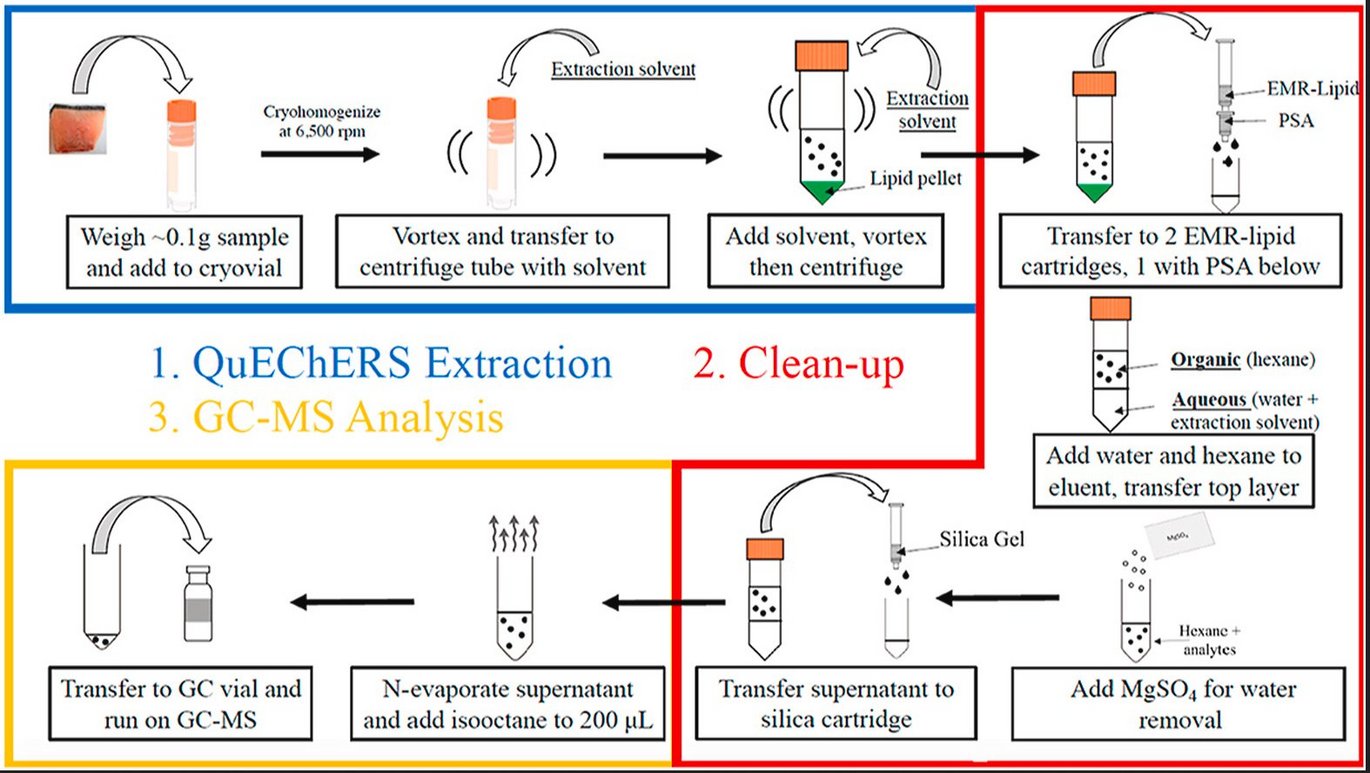Development and validation of a modified QuEChERS method for extracting polychlorinated biphenyls and organochlorine pesticides from marine mammal blubber
New publication by Pedersen, Adam F.; Dietz, Rune; Sonne, Christian et al.

Abstract:
The monitoring of legacy persistent organic pollutants (POPs) in blubber of key sentinel marine mammal species has been conducted using established techniques for decades. Although these methods for polychlorinated biphenyl (PCB) and organochlorine (OC) pesticide determination provide accurate and reproducible results, they possess some drawbacks in terms of cost, time, and a need for large volumes of toxic solvents. QuEChERS (quick, easy, cheap, effective, rugged, and safe) extractions may help address these issues, but have not been applied to marine mammal blubber/adipose. As such, our aim was to develop, validate, and apply a QuEChERS method for the extraction of PCB and OC contaminants in marine mammal blubber. First, we tested multiple solid-phase extraction and clean-up steps to find the approach that provided the cleanest extracts along with consistent and acceptable analyte recovery, accuracy, and precision. QuEChERS extractions followed by two enhanced matrix removal-lipid (EMR-lipid), one primary-secondary amine (PSA), and one silica gel clean-up showed the highest matrix removal and acceptable recoveries of spiked internal (62–97%) and external standards (61–94%). Solvent usage was reduced by ∼393% and extraction time was reduced by ∼25% (from 16 to 12 h). Next, the method was validated using standard reference material (SRM) NIST 1945. Recovery experiments on SRM (n = 5) showed acceptable recovery for 76% and 77% of PCBs and OC pesticides, respectively, and high precision for 73% and 69% of PCBs and OCs, respectively. Finally, the method was used on a set of southeast Greenland killer whales (n = 13), with previously published PCB and OC data. Bland-Altman plots indicated good agreement between QuEChERS and current-use methods for ΣPCBs and some OCs with no significant constant or proportional bias. These results demonstrate that this QuEChERS extraction method represents an effective, lower cost alternative to current-use extractions for PCBs and OCs in blubber, and likely other high-lipid samples.
